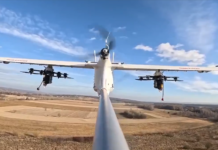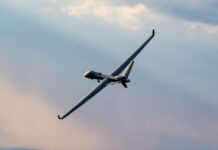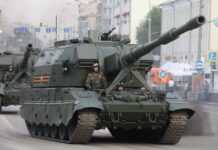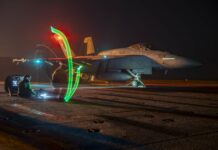
GA-ASI Makes Progress With Plans for Aerial Recovery of Small UAVs
Peter Felstead
General Atomics Aeronautical Systems Inc (GA-ASI) has moved closer to being able to use larger uncrewed aerial vehicles (UAVs) to deploy and recover smaller ones, announcing on 10 October 2023 that it had recently deployed and retracted a towline with a ‘smart end feature’ from a GA-ASI MQ-20 Avenger UAV in flight.
During the demonstration, which took place on 20 September 2023 over Dugway Proving Ground in Utah, a towline supplied by New Jersey-based Breeze-Eastern equipped with GA-ASI’s smart end feature was integrated into the payload bay of an MQ-20 Avenger: a turbofan-powered UAV with a wingspan 20 m and a maximum take-off weight of 8,255 kg.
While the Avenger was in flight the towline was deployed away from the UAV to an optimal distance to facilitate an aerial recovery. The smart end feature was able to wirelessly transmit its position back to the Avenger, confirming its ability to transmit the data to a nearby small uncrewed aircraft system/air-launched effect (SUAS/ALE) for aerial recovery. The smart end feature’s ‘deployed’ position correlated to GA-ASI’s multi-degree-of-freedom finite element catenary models, confirming its potential for SUAS/ALE aerial recovery.
The towline’s smart end feature serves as a beacon and mechanical interface for aerial recovery. The SUAS/ALE would calculate its precise position relative to the smart end feature for navigation into towline intercept, followed by a manoeuvre to capture the end feature. Once secure on the towline, the SUAS/ALE would then fold its wings and cut its engine to transition into a passively stable towed body. A podded hoist aboard the host UAV would then reel in the SUAS/ALE to a captive carriage state where the two platforms would return to base together.
Beyond just captive carry back to base, however, a SUAS/ALE could be refuelled, recharged and/or rearmed and then redeployed. Redeployment could occur from the host aircraft, enabling SUAS/ALEs to conduct their own orbits from airborne launch and recovery positions.
Such aerial redeployments would allow a UAV like GA-ASI’s Avenger or MQ-9A Reaper to “serve as a mobile command centre for a network of SUAS/ALEs in a persistent, expansive grid for surveillance, electronic attack, enemy air defence suppression, communication pathways, or joint all-domain mobile command and control for days or weeks at a time”, GA-ASI noted.
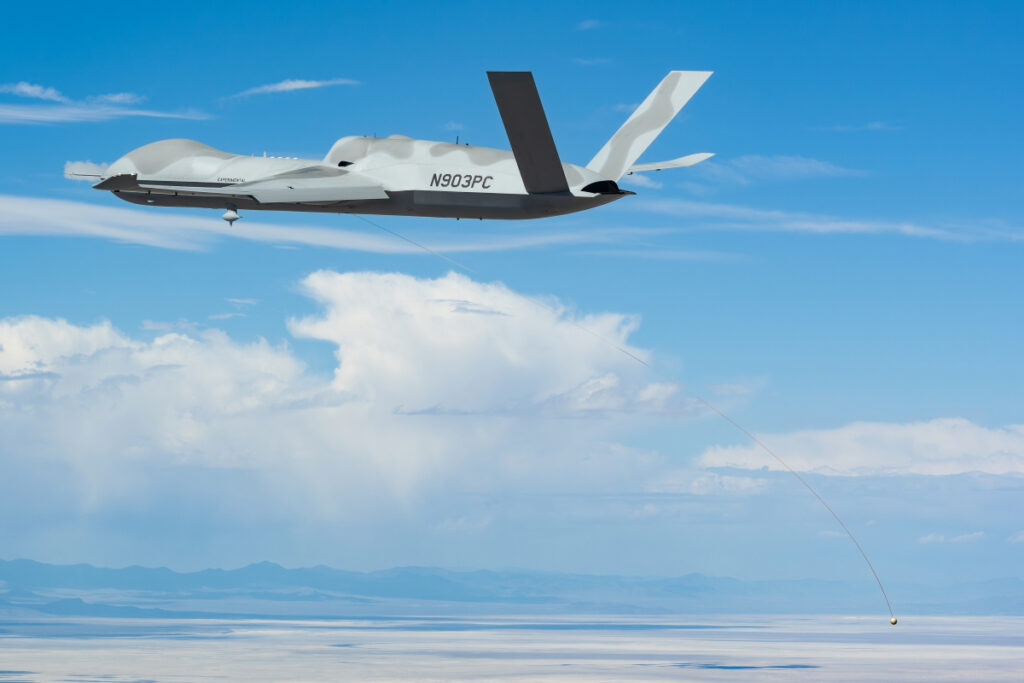
“Integrating air-launched UAS from Group 5 unmanned aircraft is possible, in part, thanks to advances in relative navigation technology, complex towline analysis, and multi-aircraft control being pioneered by GA-ASI,” Mike Atwood, Vice President of Advanced Programs at GA-ASI, was quoted by the company as saying. “We are excited to see this technology enable long-range kill chains from today’s manned and unmanned systems supporting operations in highly contested environments.”
GA-ASI noted that Breeze-Eastern’s commercial-off-the-shelf helicopter rescue hoists, which have performance capabilities that meet or exceed system requirements, provide a high technology readiness level (TRL) and offer a low-risk solution to effect SUAS/ALE aerial recovery.






![Countering the aerial threat Based at NAS Key West in Florida, US Naval reserve squadron VFC-111 operates the F-5N Tiger II in the aggressor role. [USMC/SSgt Dengrier Baez]](https://euro-sd.com/wp-content/uploads/2025/06/A1-Kopie-218x150.jpg)
![Beyond the drone line: Lessons from the drone war in Ukraine A typical RF controlled FPV drone, shown during take-off. These little platforms have already reshaped the battlefield significantly, but in many ways have not yet reached their full potential. [Armyinform]](https://euro-sd.com/wp-content/uploads/2025/06/RF-FPV-Drone-Takeoff_Armyinform-Kopie2-218x150.jpg)

